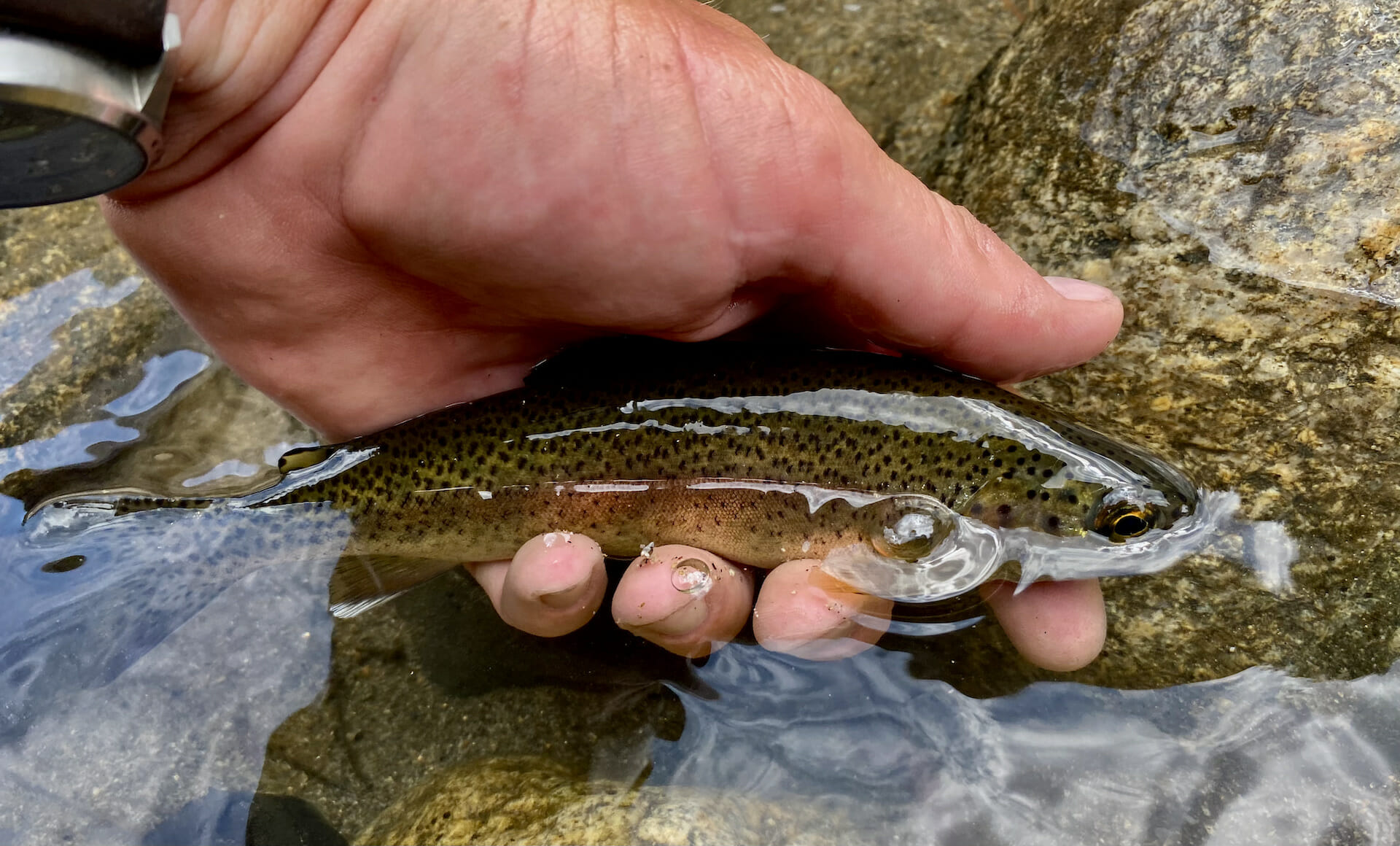Kern River Rainbow Trout (Oncorhynchus mykiss gilberti)
Species summary and status:
Kern River rainbow trout look similar to Coastal rainbow trout, have a slight gold hint. They have many fine, irregular spots all over their bodies, and larger fish may have a rosy streak along their sides. They can also be identified by the distinctive white forward edges on their fins.
Kern River rainbow trout are a distinct subspecies of rainbow trout that likely resulted from natural hybridization of Coastal Rainbow trout with Little Kern golden trout several thousand years ago. They are more genetically similar to California golden trout and Little Kern golden trout than they are to present-day Coastal rainbow trout.
Historically, Kern River rainbow trout could be found throughout the Kern River and its tributaries in Tulare County. Today, most populations can only be found far upstream of Lake Isabella within the Sequoia National Forest or Sequoia National Park lands.
There is little to no abundance data on unhybridized Kern River rainbow trout populations. Kern River Rainbow trout were once abundant and widespread in the upper Kern River Basin and were subject to intensive angling pressure. Since the nineteenth century, overexploitation, habitat degradation and, most importantly, hybridization with other trout has reduced populations to a small fraction of historical numbers. Based on California Department of Fish and Wildlife (CDFW) surveys in 2009 and expert judgment, they currently persist in about 20 km (12 mi.) of small streams. Using the best estimates of approximately 200-1,500 trout per km (1.2 mi.), total numbers of Kern River rainbow trout are likely between 4,000 and 30,000 fish, though are likely at the lower end of this range due to habitat degradation and hybridization. The majority of remaining unhybridized Kern River rainbows are upstream of natural and/or man-made barriers and isolated from other populations, and their status could deteriorate rapidly due to a lack of population connectivity.
Almost no life history studies have been conducted on Kern River Rainbow trout. Presumably, they share similar habitat with Coastal rainbow trout in high elevation streams. They historically grew to large sizes, as much as 71 cm (28 in.) and 3.6 kg (8 lbs.), although fish over 25 cm (10 in.) are rare today.
Looking Forward:
CDFW recently conducted surveys throughout the watershed in search of “pure” Kern River rainbow trout. Genetic studies found a population in a headwater lake near Big Arroyo. Steps are being taken to capture a portion of this population and rear them in a hatchery. If successful, these fish may be used to support sport fisheries in the lower Kern River and replace stocking of rainbow trout. To further protect the genetic integrity of Kern River rainbow trout, all hatchery rainbow trout stocked into the Kern River have undergone a process to make them sterile. An Upper Kern Basin Fishery Management Plan was written to restore, protect, and enhance the native Kern River rainbow trout populations and prevent them from becoming an endangered species.
All data compiled from:



